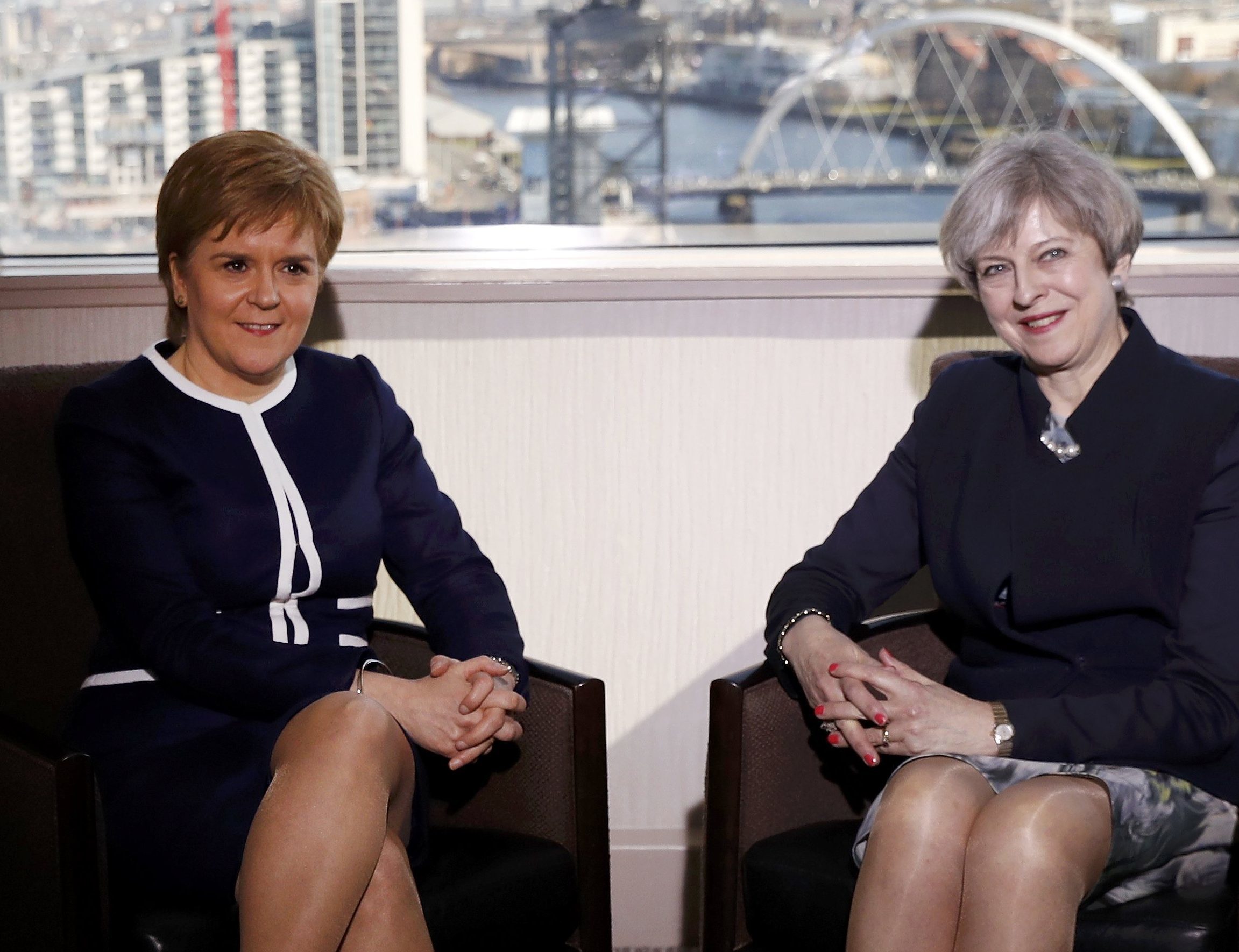
SCOTTISH Tory leader Ruth Davidson has claimed Theresa May is more in touch with voters north of the border than Nicola Sturgeon after a new poll suggested the Conservatives could win eight seats in Scotland in the General Election.
Research by YouGov for The Times in Scotland put support for the Conservatives on 28% – double the 14% recorded for Labour.
The SNP continue to be the most popular party, with 41% of those questioned backing Ms Sturgeon’s party in the upcoming General Election.
The Liberal Democrats are supported by 7%, ahead of the Greens on 3% and Ukip on 2%.
Such a result could see the SNP win 47 seats north of the border – which would leave the nationalists nine down on the 56 constituencies they won in 2015.
The Tories could win eight seats in Scotland – with the projection suggesting the Conservatives could defeat SNP depute leader Angus Robertson in Moray.
Winning eight seats would give Mrs May’s party its best General Election return north of the border since 1992 when the party won 11.
Five years after that, the Tories were wiped out in Scotland when Tony Blair swept to power in 1997.
In 2015 the Tories won just one seat in Scotland, the Dumfriesshire, Clydesdale and Tweeddale seat of Scottish Secretary David Mundell.
Ms Davidson said: “This poll reveals Theresa May is more in touch with people in Scotland than Nicola Sturgeon.
“Last month, Alex Salmond, Angus Robertson and Nicola Sturgeon all arrogantly declared that opposing a second referendum would stoke support for independence.
“In fact, most people in Scotland see the common sense in saying now is not the time for yet another divisive referendum campaign.
“The SNP should show some humility and take its unwanted plan for a referendum off the table immediately.”
The poll found 45% of Scots back independence, with 55% in favour of the Union – the same result as recorded in the 2014 referendum.
While 42% said they wanted another vote on independence to take place, just over half (51%) were against this while 7% said they did not know.
More than 1,000 people took part in the survey between April 24 and 27.
The First Minister insisted it was only her party that could “stand up to the Tories” as she warned: “The truth is the more Tory MPs Westminster has, the heavier the price Scotland will pay.”
The SNP leader was campaigning in East Renfrewshire, which the SNP took from the then Scottish Labour leader Jim Murphy in 2015, whose party lost all but one of their Scottish seats.
Ms Sturgeon said: “A free hand for the Tories would mean even more cuts, more attacks on low-income families and a hard Brexit.
“The SNP is the only party that can stand up to the Tories and, working with the Scottish Parliament, SNP MPs will fight these devastating policies.”
Scottish Labour general election campaign manager James Kelly said: “This is yet another poll that shows people in Scotland do not want another divisive referendum and they don’t want to leave the UK.
“It’s time for the nationalists to focus on the job of governing, like dealing with the crisis in our schools and tackling the problems in the NHS after a decade of SNP mismanagement.
“Voters can send a message to Nicola Sturgeon that Scotland is divided enough, we don’t need any more division.
“When people go to the polls for the council elections on May 4 and the General Election on June 8, they can vote Labour to elect a local champion; or they can vote SNP to elect a candidate who will only focus on another divisive referendum.”

Enjoy the convenience of having The Sunday Post delivered as a digital ePaper straight to your smartphone, tablet or computer.
Subscribe for only £5.49 a month and enjoy all the benefits of the printed paper as a digital replica.
Subscribe